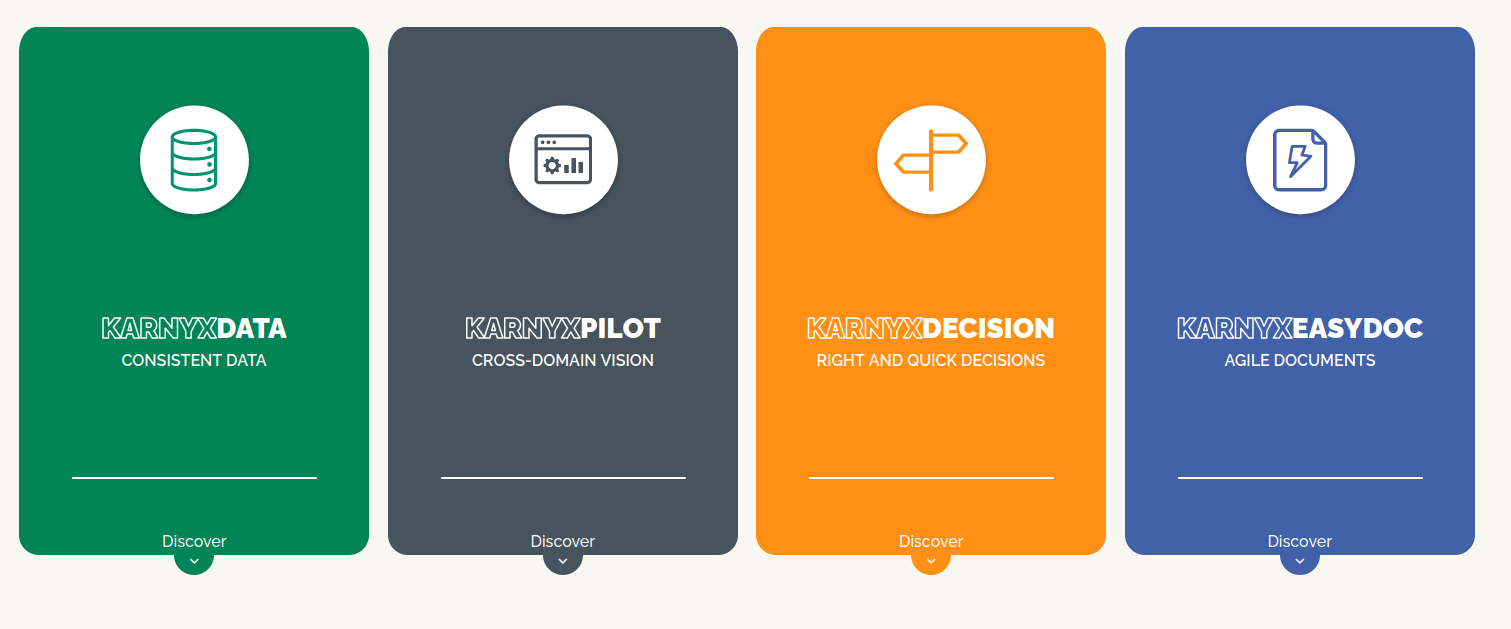Making data speak - genesis of explainable AI at Anabasis
Posted on 2022-04-13 by Anabasis
Translations: frCategories: Enterprise
Making data speak - genesis of explainable AI at Anabasis

Explainable AI didn't come out of Jupiter's head fully armed... Anabasis still helped a little in the birth... From the genesis of Anabasis to the development of the "Karnyx" software suite, discover the explainable AI discovery sequence.
Anabasis: genesis and key dates.

Anabasis means "climb to the heights" in Greek. Founded in 2010, Anabasis began its adventure with service activities around complex systems: requirements engineering, verification, validation, business expertise. It's a time when we were traveling a lot: Europe, United States, Middle East (Gulf countries) in the wake of major contractors like Airbus, Capgemini or Bull. We took care of really inspiring and high-stakes systems: validation of a state's global security management system, management system for the Ministry of Defense's logistics resources were on the menu! With, already, this coupling between needs engineering and business expertise that we will find again later down the road.
It was in 2016-2017 that Anabasis took the turn of knowledge engineering and more generally reasoning-based artificial intelligence - in short, explainable AI!
It all started with an exchange with the French Ministry of the Armed Forces at the time about a project that was sensitive to say the least: military pay... We started with a simple idea: what if the data problems noted in output (errors on the payslips) came from a misunderstanding of the following two key systems: the payroll administration system on the one hand and the pay super-computer on the other hand? At the time, we were politely listened to... and reminded that there were already very serious people in place, service providers with a storefront and that there was no question of disturbing... Was this the end of the story before it even began? Well, not quite...
Our track record at the French Ministry of the Armed Forces - a huge potential for transposition to the civilian world.

The Ministry must be kudoed for its openness to innovation, since they directed us towards a very delicate mission: to put under control the exchanges between the administrative management system for civilian defense personnel (60,000 agents) and the pension management system. This interface had been giving them a hard time for 2 years. We solved the question in 2017 in just 2 months - modeling of business objects on each side (personnel management and pension), creation of a semantic pivot and space for business dialogue between the entities in charge of personnel management and pension management. The problem of misunderstanding and opacity of the "shuttle file" between the two entities is then solved in just a few iterations.
This initial success led the French Armaments Directorate (DGA) to present us with a series of innovation challenges related to our capability in explainable AI. Not quite the 12 Labors of Hercules, but almost!! Among the projects entrusted to us between 2018 and now:
- Manage dialogue (interoperability) between operations management systems via semantics. As military operations operate on the basis of messages (orders, reports), it is crucial that everyone understand each other, including (and above all) the communication systems between them. It is a real challenge when messages are moved from one organization to another, let alone from one country to another. We have taken up this challenge of semantic interoperability - a sexy term to say that we are able to align data with respect to a given standard.
- Rules-based decision-making system for the Aircraft Maintenance Department. How to make well-justified decisions when it comes to accounting for military assets, some of which are certainly harmless (bolts, etc.) but others may have a very considerable operational or simply financial value ? This is the challenge that we have taken up successfully - moreover this is completely transposable outside the French Ministry of Armed Forces, whether for accounting or for compliance in the broadest sense - including banks, for example.
- How to ensure that the systems in operation or the systems being planned meet the needs? Often we jump with both feet directly from doctrine (the high-level expression of need) to system engineering. In doing so, we short-circuit an essential step, called "capacity planning" in armed forces jargon: ensuring a mutual dialogue between the "why" (the doctrine) and the "how" (the systems supposed to meet the need), by asking the right questions. We have taken up this challenge of capacity planning, which is eminently transposable to the assembly industry. Who, for example, in the automotive industry still defines himself as a simple manufacturer? Between the Californian design offices, the customer experience and the sub-manufacturers (rear, cockpit, front of the car, etc.), the profession of the big names in the automobile industry is more akin, as Louis Schweitzer of Renault pointed out, to a work of "urbanist architect".
- How to make aircraft maintenance data from the Aeronautical Maintenance Department consistent and in compliance with aeronautical standards? This alignment challenge is not at all trivial. Knowing that maintenance operations are increasingly carried out jointly by manufacturers and the administration, it is crucial to ensure that neither time nor quality is lost with each changeover. This is the challenge of digital continuity - a challenge that invetitably amounts to seeking compliance with a aeronautical standards. This is the challenge we have been asked to meet. The exciting and demanding projects in which we participate with our explainable AI tools are a wonderful platform for realizing data alignments in the civil sector: merging of strategic customer databases, merging information systems towards a single unifying system, etc.
- How to ensure that structured technical documents comply with a given standard? Thanks to the "virtual highlighter" coupled with modeling a business domain, we have demonstrated that it can be done. With incredible potential for civilian applications, including the ability to better understand legal and technical documents and above all to automatically check compliance.
Can we then say that we were incubated by the French Ministry of the Armed Forces? I would say both "yes" and "not quite".
Yes, because through the projects entrusted to us, we have had privileged access to fascinating subjects, in a very demanding context, a hallmark of the ministry and a unique springboard for bouncing back elsewhere.
Not quite, because at no time have we been formally subsidized by the ministry: we managed on our own to finance our development and only got cash from the ministry through commercial contracts for real work. In the end, it may be healthier than via funding and subsidy approaches, which are widely put forward by the ministry and to which, despite the fact that we are doing breakthrough innovation, we have not yet had access so far!
Still, the way is wide open for pursuing our development:
- continuation of the successes achieved, towards the Ministry of the Armed Forces.
- yargeting civilian sectors: IT, accounting, compliance, professional services (lawyers, notaries, etc.), manufacturing and process-driven industries, etc.
We have lately been asked by of a group of world-class French cheesemakers in the accumulation of experience in the field of dairy processing. We are also entering the world of non-fungible tokens (NFTs). Or even the world of car model design or support for accounting managers in their accounting or inventory operations.

What other sectors are open to us? we can quote in bulk maintenance, human resources, accounting, exploitation of technical documents, etc.
What cross-cutting issues can we tackle? we can mention the quality setting, the usability, the traceability, the interoperability or the accessibility of the data.
But beware: the Anabasis adventure remains a "French love affair" : a lasting romance between an acute business problem on the one hand and people who trust us on the other. Starring people who have innovation pegged to the body!
Karnyx: making the data speak

I can only refer you to our excellent website: www.anabasis-assets.com!
At Anabasis we are convinced that the business problem must be put back at the center. Too often the latter is downright drowned in the systems, making the whole opaque and difficult to develop.
The way to approach this problem is through data, business modeling and rules. We call it symbolic AI (possibly hybridized with algorithms) but basically it's plainly and simply explainable artificial intelligence.
We work hard, day and night, to perfect our Karnyx software suite, which is the subject of another blog post on the Anabasis Blog. Allow me to say here that our technology is compatible with the times: mix between open code of certain central elements, use of an open source reasoning engine, and code for modeling facilities for engineers and interface for users.
A company focused on serving its customers, Anabasis systematically relies on Karnyx for its work: priority is given to the problem to be solved around four main families of services:
- KarnyxDATA to get consistent data,
- KarnyxPILOT to have an interactive and in-depth management platform with a cross-domain vision,
- KarnyxDECISION for relevant and fast decisions,
- KarnyxEASYDOC for technical documents made usable and agile.
Anabasis, building on its track record in explainable AI, continues its teamwork with its custom suite Karnyx. It is also a common good to be shared outside Anabasis: customer projects, academic partners, professional communities.
It's up to us to continue this great adventure together. Welcome to this Anabasis Blog. I wish you a lot of fun - as we also have - evolving in this beautiful world of explainable artificial intelligence and logical reasoning.
Richard Roll
President and founder, Anabasis Assets SAS.
richardroll@anabasis-assets.com
Explainable AI in all its states (or almost!): a few use cases
2024 marks a turning point for Anabasis: after successful production launches with key customers, we needed to take a step back, beyond the sectoral or business applications of our Karnyx expla
Explainable artificial intelligence and Semantic Web tools - Part 2
In the previous post, we focused on RDF-style knowledge graphs, the basis of Anabasis technologies. Now we a
Retour sur la participation d'Anabasis à SemWeb.Pro 2023
Parce qu'Anabasis Assets a construit sa suite logicielle sur les normes et standards du web sémantique (entre autres), il était naturel de participer à la Jou
